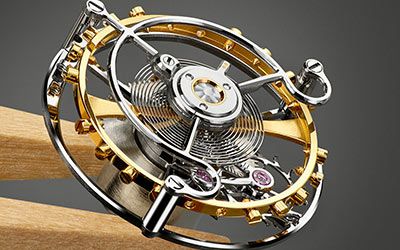The Tourbillon Mechanism: An Innovation in Mechanical Watch Design
The tourbillon mechanism is a significant innovation in the design of mechanical watch movements, invented by Abraham-Louis Breguet in 1801.
Its original purpose was to improve timekeeping accuracy by compensating for the effects of gravity on pocket watches.
What is the Tourbillon?
The tourbillon (from the French word “tourbillon”, meaning "whirlwind") is a mechanism that integrates the escapement system and the balance wheel's hairspring into a rotating platform. This platform slowly rotates around its axis, usually once per minute, to reduce timekeeping deviations caused by positional changes in the watch.
How It Works
1. Structure
The tourbillon mechanism consists of:
- The escapement system: Regulates and distributes energy from the mainspring (the power source) to the balance wheel (the regulating organ).
- The hairspring: Ensures the stability of the timing through oscillations.
- A rotating cage: Holds the above components and rotates.
2. Operating Principle
When the watch changes position (e.g., from vertical to horizontal), the effect of gravity influences the escapement system and the hairspring, causing slight deviations in timekeeping.
The rotation of the cage (usually 360° per minute) evenly distributes the effects of gravity in all positions, thus reducing deviations.
Tourbillon Structure
- Cage: Rotates around its axle and carries the escapement system and regulating components.
- Escapement system: Regulates and distributes energy to the regulating organ.
- Hairspring: Its oscillations regulate the accuracy of the watch.
When Was It Introduced?
The first watch featuring a tourbillon mechanism was introduced in 1801 by Abraham-Louis Breguet. Initially, it was used in pocket watches and later integrated into classic mechanical and automatic watch movements.
Why Is It Used?
In modern times, the tourbillon is primarily a showcase of mechanical expertise and craftsmanship. Contemporary watch movements can achieve exceptional accuracy without it. However, the tourbillon remains a symbol of luxury and fine watchmaking. While it was originally useful for pocket watches, which were mostly kept in a vertical position, in today's mechanical watches, its value is primarily aesthetic and collectible.

